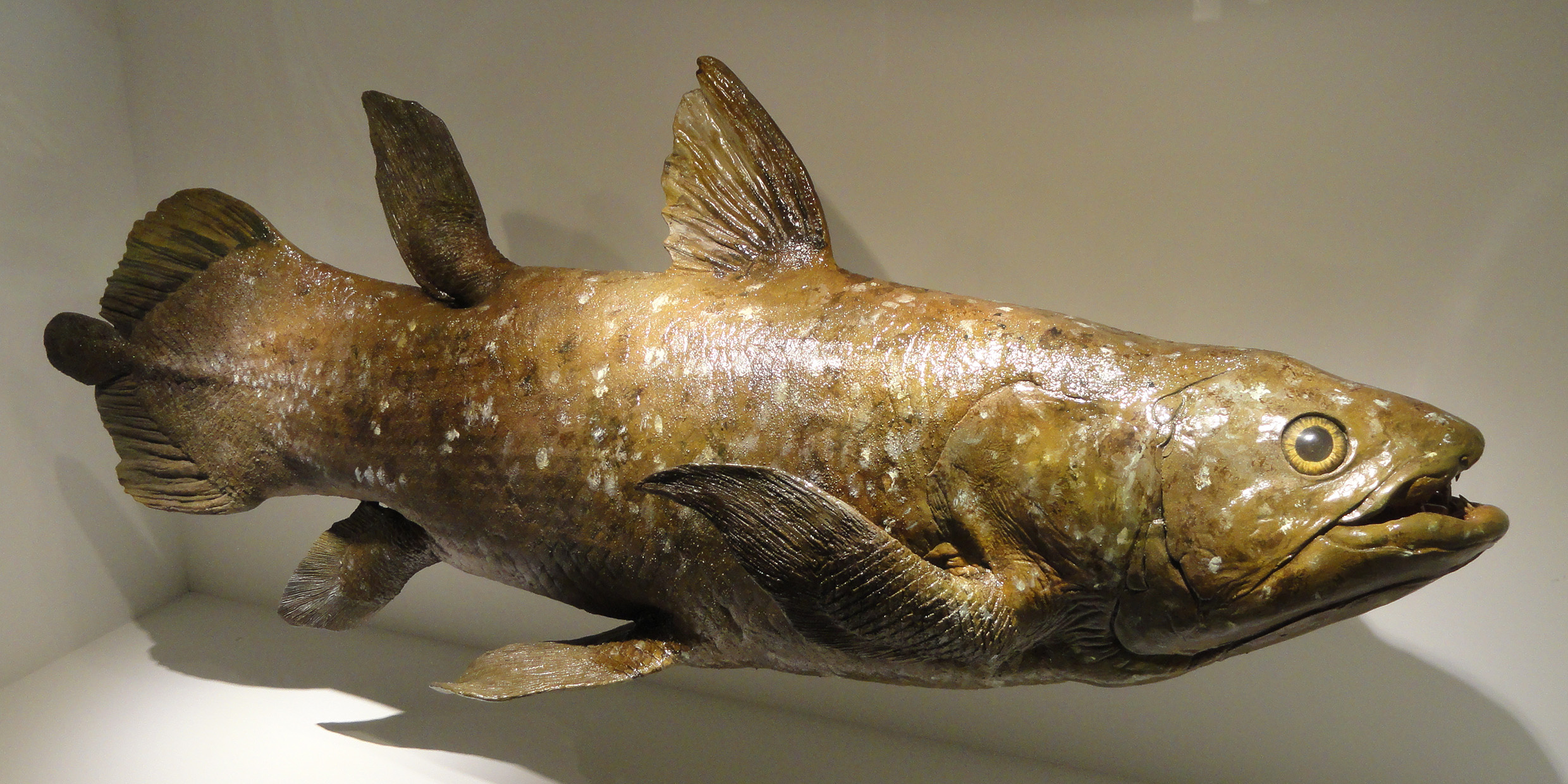Originally published 19 October 1987
"Consider now the Coelacanth,
Our only living fossil,
Persistent as the amaranth,
And status quo apostle."
Leave it to Ogden Nash, that master of whimsical verse, to find the perfect rhyme for coelacanth. The amaranth is the flower of poetic fame that never fades. And the coelacanth (pronounced see-la-canth) is the fish that never fades, once thought to have been extinct for eons, all the while holing up in the depths of the Indian Ocean, quietly maintaining its unique and amaranthine status quo.
For years the coelacanth was known to science only as a fossil in very ancient rocks. It is a member of a lobed-finned family of fishes that flourished at the time when fins and gills were evolving into feet and lungs. Some of the coelacanthic tribe flip-flopped onto the shore, took a gulp of air, and eventually transformed themselves into the higher animals, including ourselves.
Other coelacanths stayed in the sea and became extinct. The last of their kind show up as fossils in rocks that are 70 million years old.
Or so it was thought.
Unexpected rediscovery
Then, in 1938, a fisherman snared a coelacanth in the waters of the Indian Ocean off the coast of Africa. This unattractive, mucus-covered, bug-eyed beast, who may have been our ancestor, is not extinct after all. It has maintained itself essentially unchanged in the murky depths of the sea. It is a “fossil” from the past, mysteriously but most assuredly alive.
Upon discovery, the coelacanth became an instant celebrity, but apparently it has no taste for the limelight. A second specimen was not recovered until 1952. The fish has remained grandly elusive. It may instinctively know that the only way to survive for 70 million years is to lie low and keep out of trouble. After all, look what happened to the coelacanth’s terrestrial neighbor, the dodo of Madagascar. Discovered by Europeans in 1507, it was gone a few centuries later. Fame was the dodo’s fatal misfortune.
In spite of (or perhaps because of) its natural reticence, the coelacanth has been relentlessly pursued. The first observations of a living coelacanth were reported in 1955 by Jacques Millot, the director of the Madagascar Institute of Scientific Research. Millot’s coelacanth was caught on a line and released alive into a tank. The bottom-loving creature with phosphorescent eyes was much distressed to find itself in sunlight. It sought out the darkest corners of the tank. Within hours it had turned belly-up and was making agonized movements with its gill-covers and fins. Its death throes were carefully observed by a crowd of enthusiastic admirers.
The coelacanth was first photographed in its natural habitat by the French diver Jacques Stevens in 1966. Stevens encountered a coelacanth 130 feet under the sea, and set off his flash-gun right into the startled fish’s gaping eyes. The highly unflattering color photo soon appeared as a two-page spread in Life magazine. If you are as ugly as the coelacanth you don’t need this kind of publicity. Said Stevens: “Although fierce-looking, my coelacanth was not aggressive; it just seemed anxious to escape.”
Observed in the wild
And no wonder. In a recent [1987] issue of Nature comes a report of extensive observations of coelacanths at home on the bottom of the sea. A group of German scientists tracked the fish to its lair, 300 feet under the surface, using a research submarine equipped with movie cameras. The site was near the remote volcanic islands of the Comores in the Western Indian Ocean.
On their own “turf” the coelacanths lead a low-key lifestyle that is well-suited to a creature that has been out-of-touch with progress for the past 70 million years. It drifts up, and drifts down, on rising and falling currents. It lolls, it dawdles. It sluggishly swims, sometimes forward, sometimes backward, sometimes upside-down. It stands yoga-like on its head, for no apparent reason at all. Only four times in 496 minutes of observations did the Germans record anything resembling a fast start.
The coelacanth seems to have perfected the art of doing nothing, and that perhaps is the secret of its survival. Now that the elusive fish’s unhurried habits have been definitively recorded on film, let’s hope that scientists and tourists and scuba-divers will leave the poor, amaranthine creature alone. It belongs to another time, not ours.
Give the last word on the coelacanth to Ogden Nash:
"It jeers at fish unfossilized
As intellectual snobs elite;
Old Coelacanth, so unrevised
It doesn't know its obsolete."



